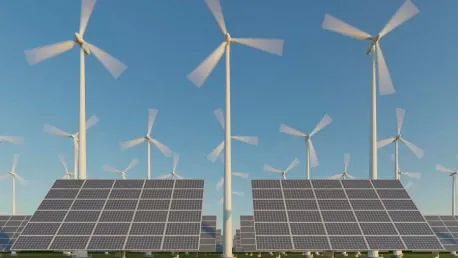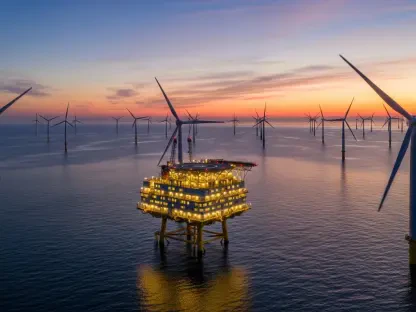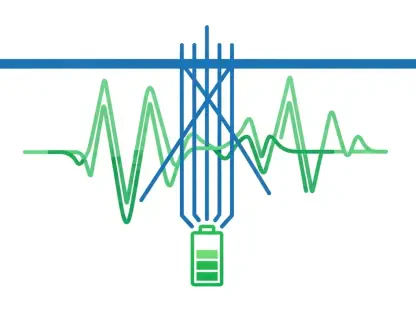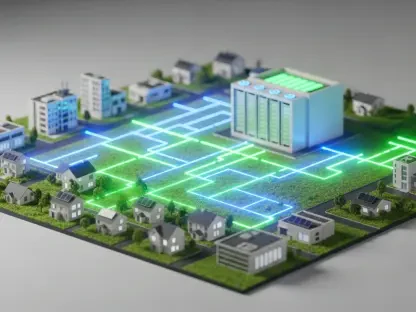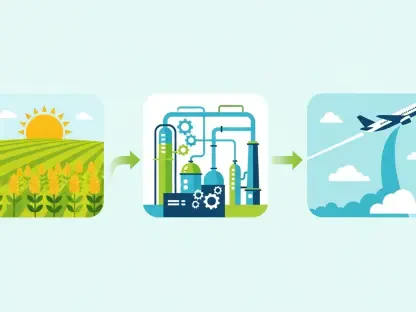Today we have Christopher Hailstone with us, an expert in renewable energy, energy management, and electricity delivery. Christopher provides valuable insights on grid reliability and security. Our discussion today will cover various aspects of renewable energy and its interplay with climate change, recent climate patterns’ impacts on energy production, and the integration of advanced technology in renewable energy planning.
Can you explain how renewable energy sources are currently being used to address the climate crisis?
Renewable energy sources like solar, wind, and hydropower are crucial in reducing carbon emissions and transitioning away from fossil fuels. By harnessing natural processes, we can generate electricity with minimal environmental impact. Solar panels capture sunlight, wind turbines convert wind into energy, and hydropower uses water flow to generate electricity. These methods collectively reduce our reliance on coal, oil, and natural gas, significantly lowering our overall greenhouse gas emissions.
What role do weather conditions play in renewable energy production?
Weather conditions are fundamental to renewable energy production because solar panels need sunlight, wind turbines require wind, and hydropower depends on water flow from rainfall and snowmelt. These sources directly influence the amount and reliability of energy we can produce. Variability in weather patterns can cause significant fluctuations in energy output, which complicates the integration of these renewable sources into the energy grid.
How did the shift from La Niña to El Niño in 2023 affect global renewable energy generation?
The shift from La Niña to El Niño in 2023 significantly impacted global renewable energy generation by altering rainfall, wind patterns, and solar radiation. This transition led to extreme weather variations, such as prolonged droughts and intense rainfall, which disrupted energy production from hydropower, wind, and solar installations. For instance, regions that depended on predictable rainfall for hydropower experienced significant drops in electricity generation.
Could you provide specific examples of how climate change impacted hydropower in countries like Sudan and Namibia in 2023?
In 2023, Sudan and Namibia both saw decreases in hydropower output due to unusually low rainfall. a. Sudan generates around 60% of its electricity from hydropower. b. With rainfall totaling just 100 millimeters, or less than half the long-term average, the lower water levels in key rivers reduced the capacity of hydropower plants to generate electricity, forcing these countries to seek alternative sources to meet their energy needs.
What challenges did wind energy face in 2023 due to climate conditions in countries like China, India, and regions in Africa?
In 2023, wind energy faced numerous challenges due to variations in wind patterns caused by climate conditions. a. China, with 40% of global onshore wind capacity, saw only a modest increase in wind output because of wind anomalies. India’s production declined with weaker monsoon winds, and several regions in Africa experienced even steeper drops, with some areas seeing a 20-30% fall in wind generation capacity. b. These conditions severely impacted the expected energy outputs, highlighting the vulnerability of wind energy to changing weather patterns.
How did changing climate conditions create opportunities for solar energy production, particularly in South America?
Changing climate conditions in 2023, specifically the clear skies and elevated solar radiation, benefited solar energy production in South America. a. Brazil, Colombia, and Bolivia saw a 4-6% increase in solar generation due to these favorable conditions. b. This increase meant an additional three terawatt-hours of electricity, enough to power over two million homes for a year. Such climate-driven boosts highlight solar energy’s potential under certain conditions, even amid broader climate challenges.
What are the vulnerabilities of renewable energy infrastructure concerning climate change?
Renewable energy infrastructure faces several vulnerabilities due to climate change. a. Dams, solar farms, and wind turbines are designed based on historical climate patterns. As these patterns change, the structures may not withstand new extremes in weather, making them susceptible to damage or reduced efficiency. Dams rely on consistent water flow, which can be disrupted by fluctuating rainfall. Solar farms can suffer from extreme heat, and wind turbines can be less effective with altered wind patterns.
How might melting glaciers temporarily boost hydropower, and what are the long-term consequences once these glaciers are gone?
Melting glaciers can temporarily boost hydropower by providing increased runoff, which enhances water flow in rivers feeding hydropower dams. However, this boost is short-lived. Once the glaciers are depleted, the long-term consequence is a significant reduction in water availability, leading to diminished capacity for hydropower generation. This scenario underscores the need for sustainable water management strategies and alternative renewable energy sources.
How are rising sea levels and stronger storms posing risks to renewable energy facilities, including those near coastlines?
Rising sea levels and stronger storms pose significant risks to renewable energy facilities, particularly those near coastlines. Coastal solar farms and wind turbines are vulnerable to flooding and storm surges, which can damage infrastructure and disrupt operations. Moreover, stronger storms increase the risk of power outages and erosion, demanding more robust protective measures to ensure the longevity and reliability of these installations.
Can you discuss the implications of extreme heat on solar panel efficiency and the grid infrastructure?
Extreme heat can reduce the efficiency of solar panels because they operate optimally within a specific temperature range. Higher temperatures can decrease their power output and shorten their lifespans. Furthermore, the grid infrastructure can be strained by heatwaves, as increased demand for cooling systems coincides with potential heat-induced inefficiencies and failures in power lines and transformers.
What challenges do nuclear power plants face regarding climate change, particularly concerning cooling water availability?
Nuclear power plants face challenges with cooling water availability in a changing climate, as heatwaves and prolonged dry periods can lower river levels and reduce water sources needed for cooling reactors. Without adequate cooling water, plants may be forced to reduce output or shut down entirely to prevent overheating, posing a risk to energy supply stability.
How important is it to consider future climate scenarios when designing and building power generation infrastructure?
Considering future climate scenarios is crucial when designing and building power generation infrastructure to ensure resilience and reliability. Planning based on past climate data is insufficient; we must anticipate future conditions to avoid mismatches between infrastructure capabilities and climate realities. Integrating climate forecasts and advanced modeling into the design phase can help mitigate risks and adapt to emerging challenges.
What is “climate intelligence,” and why is it essential for the future of renewable energy?
Climate intelligence refers to integrating climate data, forecasts, and science into energy planning and decision-making processes. It’s essential for the future of renewable energy because it allows for better risk management and optimization of energy production. a. By incorporating climate forecasts and data in energy planning, we can anticipate and adjust to weather-driven changes in supply and demand. b. This integration helps improve the reliability and resilience of energy systems, ensuring a stable and sustainable energy supply even in the face of climate variability.
How can advanced climate forecasting and artificial intelligence help optimize renewable energy production?
Advanced climate forecasting and artificial intelligence can significantly optimize renewable energy production by providing accurate and timely predictions of weather patterns. a. In Costa Rica, AI models have been developed for short-term wind speed forecasting, helping optimize wind farm operations. In Chile, AI is used in floating solar technology to estimate evaporation rates, improving water management and solar efficiency. These technologies enable more flexible and responsive energy systems, enhancing overall efficiency and reliability.
What are the challenges and opportunities for renewable energy development in the Global South?
Renewable energy development in the Global South faces challenges such as a lack of investment, inadequate data, and underdeveloped infrastructure. a. Although regions like Africa have high solar potential, they only account for 2% of the world’s installed renewable capacity due to these barriers. However, the opportunities are significant. Improved data collection, international investment, and tailored environmental and energy policies can unlock substantial renewable energy potential, driving development and electrification efforts.
How important is data sharing between energy companies and climate scientists for improving renewable energy planning?
Data sharing between energy companies and climate scientists is vital for improving renewable energy planning. It allows for a more comprehensive understanding of weather patterns and energy needs, enhances predictive models, and promotes better decision-making processes. Collaboration ensures that renewable energy projects are designed with the best available information, minimizing risks and optimizing resource utilization.
What is your forecast for renewable energy and its ability to adapt to climate change?
I believe that renewable energy will continue to grow and adapt despite the challenges posed by climate change. The integration of climate intelligence, advanced forecasting, and artificial intelligence will enhance the resilience and efficiency of renewable energy systems. By diversifying the energy mix and investing in technology and data, we can create a robust and adaptable renewable energy infrastructure capable of withstanding future environmental changes.
